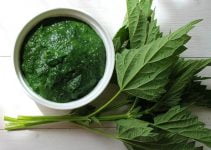
Tanning isn’t much harmful if done sensibly. However, generally, it is recommended to avoid doing it when pregnant.
Overindulging is just any activity while pregnant should be avoided. Further, lots will depend on how a person loves tanning (in the sun, uses sunbeds, or fake tanning). The Color of the skin also plays a role in deciding the pros and cons of tanning.
Usually, healthcare specialists recommend that white women should avoid tanning too frequently. It is because the skin of Caucasians is deficient in a protective pigment called melanin.
Thus, tanning considerably increases the risk of various skin cancers, including melanoma. Such a risk may be a bit higher during pregnancy due to hormonal changes.
There are various ways for tanning, and not all are equally safe
It is vital to understand that tanning infrequently, in whatever way, is safe for most women, including pregnant ladies. What may not be right is overindulging in it while pregnant.
It is good to spend some time in the sun (a good source of vitamin D), especially in the morning sun, but then tanning is altogether a different thing.
One can tan using sunbeds; they are widely available in many places and are comfortable to use. All sunbeds work by providing ultraviolet (UV) rays. These rays are similar to UV rays emitted by sunlight but more intensive.
Sunbed may expose to a higher dose of UV rays than tanning in the sun for a similar time. It means that health risks are also higher with frequent use of sunbeds.
Prolonged exposure to the sun not only increases the risk of skin cancer; it may also cause the skin to age prematurely. UV rays are not good for the eyes and increase the risk of cataracts and other eye conditions.

Tanning on the beach may be the right option. However, as recommended, overindulging in it must be avoided. Unlike sunbeds, one may end up spending much longer hours on the beach, increasing the risk of skin issues, dehydration, and other health problems [1].
Fake tan lotions or creams are perhaps the safest of all the options. These creams or lotions contain dihydroxyacetone (DHA), which is a non-toxic substance.
DHA reacts with an outer layer of the skin producing the brown pigment called melanoidin. Studies confirm that DHA does not get absorbed into the blood and cannot harm the baby [2].
Further, it is worth noticing that the skin type of individuals plays a significant role in how safe tanning is for a person. There are skin types that quickly get burnt and tan poorly, and such individuals must avoid tanning.
Further, people of color like blacks or brown people are at lesser risk as they have a very different skin type. Even certain types of skin cancers caused by UV rays are less prevalent among them.
How tanning differs in pregnancy?
Pregnancy is a unique physiological state. Therefore, the female body may react differently to various things during this state. During pregnancy, the female body goes through so many hormonal changes, and many such changes are not even fully understood by science.
That is why medical specialists recommend just avoiding overindulgence in anything while pregnant, just avoiding engaging in non-essential activities.
Hormonal changes affect skin health. In many women, the skin may become more sensitive while pregnant, thus increasing sunburn risk. These changes also mean that results from tanning may differ from what they used to be before pregnancy [2].
Tanning, though not essentially, may pose certain risks for a child. Like prolonged tanning in the sun, without drinking sufficient water may increase the risk of dehydration. Dehydration is not good for anyone, but more so in pregnancy.
There is strong evidence that prolonged exposure to UV radiation may cause folic acid deficiency. UV rays are proven to cause folate degradation in the body. It means that frequent tanning may alter folate status, increasing the risk of congenital disabilities associated with low folate status.
However, such a risk is minimal in practice, as most pregnant women take prenatal vitamins or folic acid —nevertheless, risk exists [3].
Another poorly understood factor is the influence of heat on fetal health. It is not clear if prolonged sunbathing on the beach and resulting overexposure to heat may result in any severe unwanted effects.
Conclusion
It can be said that infrequent sunbathing is perhaps relatively safe and may even benefit as it helps the body naturally build vitamin D.
Tanning infrequently by using sunbeds may also be safe. Still, frequent use of sunbeds has certain health risks. Fake tanning is perhaps one of the safer ways, but not wholly as many things are not understood by science.
It is vital to understand that one of the reasons why most health specialists are skeptical is because many things are unclear to science.
Everyone knows that sun rays are not toxic, and exposure to them even has certain health benefits, not limited to vitamin D production.
Exposure to sun rays is also suitable for mental health, sleep, and much more. Sunbeds, on the other hand, lack many such benefits, so does the fake tan.
It could be safe to say that one should avoid sunbeds as much as possible. May tan casually on the beach, but keep an eye on the watch. Fake tanning could be another way to tan safely.
References
- Pregnancy and Tanning. American Pregnancy Association. Published May 1, 2017. Accessed January 29, 2021. https://americanpregnancy.org/healthy-pregnancy/is-it-safe/tanning-during-pregnancy-1164/
- Are sunbeds safe to use during pregnancy? NHS.uk. Published June 27, 2018. Accessed January 29, 2021. https://www.nhs.uk/common-health-questions/pregnancy/are-sunbeds-safe-to-use-during-pregnancy/
- Borradale DC, Kimlin MG. Folate degradation due to ultraviolet radiation: possible implications for human health and nutrition. Nutr Rev. 2012;70(7):414-422. doi:10.1111/j.1753-4887.2012.00485.x




 Dr. Preet Pal SB is a physician (M.D. Medicine) with a specialization in diabetes (Fellowship in diabetes, Royal Liverpool Academy). He has a particular interest in metabolic disorders, considering that they are rising in every corner of the world, more so in India.
Dr. Preet Pal SB is a physician (M.D. Medicine) with a specialization in diabetes (Fellowship in diabetes, Royal Liverpool Academy). He has a particular interest in metabolic disorders, considering that they are rising in every corner of the world, more so in India.